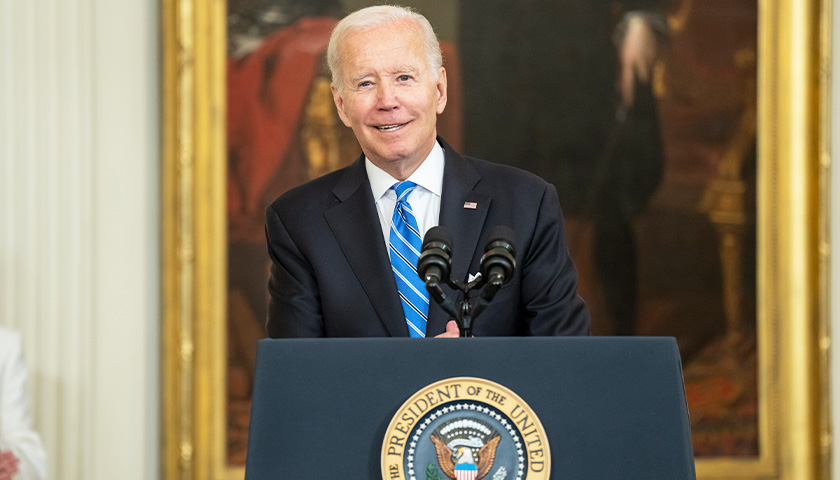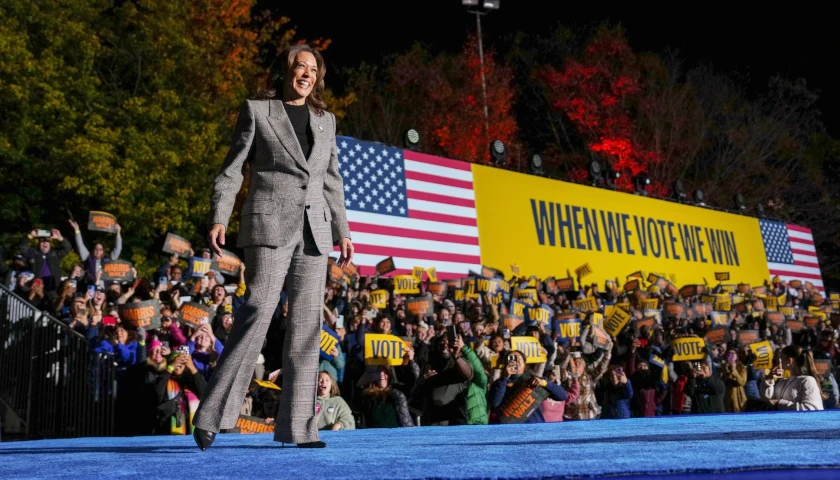by Robert Romano
President Joe Biden received no bounce in polls from his dark Sept. 1 speech in Philadelphia, Pennsylvania outlining the supposed “threat” to “the very foundations of our republic” posed by former President Donald Trump and the so-called Make America Great Again (MAGA) Republicans.
58 percent disapproved of his handling of his job before the speech, and 57 percent afterward, the latest Reuters/Ipsos poll showed.
Same with the Economist/YouGov poll: only 41 percent approved before the speech, and only 41 percent approved afterward, losing 2 points among suburban households and 4 points among rural households. He did get a boost among urban households in Democratic areas, undoubtedly owing to the partisan tone of the speech itself.
All told, 54 percent of suburban households disapprove of Biden, and only 40 percent approve, a massive 14-point gap, Economist/YouGov reports.
The speech itself seemingly signaled the start of the campaign season ahead of the Nov. 2022 Congressional midterms even as it marked a sharp departure by Biden from his inauguration speech’s promise to unite the nation: “Bringing America together. Uniting our people. And uniting our nation.” This was not the same Biden whose strength in suburban households helped him eke out a slim victory over Trump in 2020, and who he needs to shore up if his party is to have any hope in November.
Instead, Republicans remain favored to certainly take back the House, according to the latest projection by RealClearPolitics.com, showing 218 seats that lean Republican or are safe Republican, and only 183 seats that are lean Democrat or safe Democrat. Republicans are expected to pick up between 5 and 39 seats, with a 22-seat average.
As for the tossups, 28 out of 34 seats up for grabs are held by the Democratic Party. Just 6 belong to Republicans.
To hold onto the House in November, Democrats need to win not only every single one of the tossup races, but at least one or some of the lean Republican races.
Meaning, Biden really needed to appeal to at least a few Republicans — who are more enthusiastic about voting in the midterms than Democrats in poll after poll — and not turn off independents and suburban households, if he was hoping to lead his party to victory in November.
With the slimmest of majorities in Congress to make such a hyperpartisan speech targeting Trump and his other political opponents — all the while the Justice Department is busy pursuing criminal charges against Trump and his supporters — mixed government, the most likely outcome of the Congressional midterms, seems a bit more certain than it did prior to Biden’s speech.
Biden blew it. And surely his handlers noticed, for not a day later, Biden was tripping over himself to convince reporters he did not mean every single Trump supporter was an “extremist threat” to the fate of democracy in the world. That’s because Biden needs at least a few Trump supporters to vote Democrat in November. You know, after he called them extremists but then pretended to forget his speech.
On Sept. 2, Biden clarified his remarks, stating: “I don’t consider any Trump supporter a threat to the country.”
But by then the damage was already done. Biden blew it, and when the results for the House of Representatives are announced in November, it may be hard not to look back on this ominous Sept. 1 speech as solidifying public discontent ahead of the elections, all the while Democrats lovingly embraced the hate-Trump Kool-Aid. Stay tuned.
– – –
Robert Romano is Vice President of Public Policy at Americans for Limited Government Foundation.
Photo “Joe Biden” by The White House.





